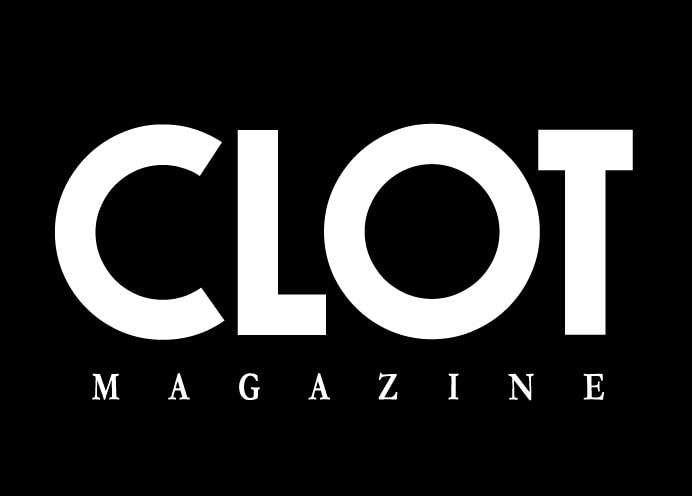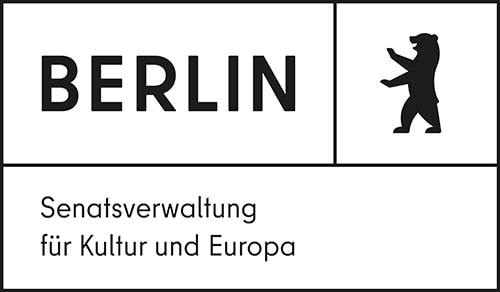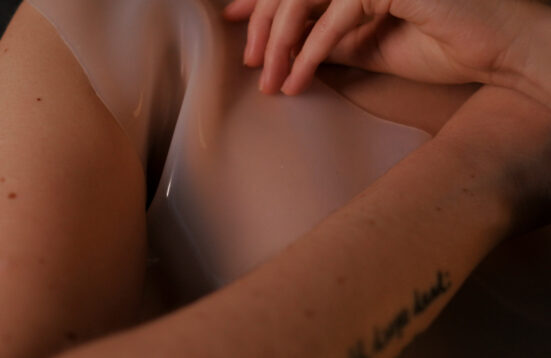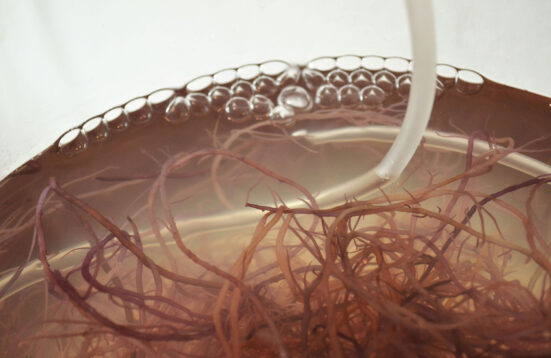PERMEABLE BODIES
Reading Group UNBORN0x9
Live-Performance (online) | Reading Group ULTRASOUND, with Julie Roberts

Art Laboratory Berlin welcomes you to a live-streamed Reading Group session on 15 July 2023, from 6 – 8 pm CET. This event is the final event of the Reading Group ULTRASOUND that had met online for four weeks.
In context of our series PERMEABLE BODIES, Art Laboratory Berlin launches a series of online reading groups as fork-out project of UNBORN0x9 showing in the exhibition Matter of Flux. Initiated by Shu Lea Cheang and Ewen Chardronnet with Future Baby Production, UNBORN0x9 reflects on the techno-scientific developments in obstetrical medicine, its social, cultural, philosophical and prospective implications and to offer an artistic view of the science in the making. During 2021-2022, UNBORN0x9 was part of the EU platform ART4MED.eu, which focuses on a methodological framework that fosters collaboration between artists, health and biomedical researchers. The online reading group aims to enable cross-border knowledge exchange – across nations, races, genders, real and virtual borders. For the studies in three specific topics – Ultrasound, Ectogenesis, Surrogacy, the online web platform incorporates reading materials, co-writing pads and online chats as multiple interface entries. Guided by a LEADER with 10 registered READERS, the online reading group aims for in-depth research/studies and motivates public debate on these topics of concern.
The second online reading group with the focus on Ultrasound is scheduled to launch on 15 June 2023 for one month duration, ending with a online reading performance public event on 15 July 2023. We have invited Dr Julie Roberts as the LEADER of the Ultrasound reading group.
Project web platform:
UNBORN0x9, http://unborn0x9.labomedia.org
Dr Julie Roberts
Dr Julie Roberts is a feminist, interdisciplinary scholar with interests in reproductive politics, experiences of maternity care and visual representations of pregnancy and birth. She is Senior Research Fellow at the Maternal Health and Wellbeing Research Group, School of Health Sciences, University of Nottingham, UK and author of ‘The Visualised Foetus: A Cultural and Political Analysis of Ultrasound Imagery’ (Ashgate 2012; reissued Routledge 2017).
On Ultrasound
Ultrasound, a technology that originated in sonar detectors for submarine warfare, and introduced into obstetric care in the early 1960s. It has since become both routine medical practice and an iconic public image. Hazy black-and-white 2D images have become increasingly sharp, and 3/4D ultrasound produces increasingly realistic, moving images. As the size of the equipment needed to produce ultrasound images has decreased, its portability and affordability has increased, allowing ultrasound to extend to new geographical areas and new markets. In recent years a new technological breakthrough has brought ultrasound imaging on to smartphones. The use of universal ultra-portable ultrasound imaging has been defined as « echo-stethoscopy ». Several companies (Phillips, Butterfly IQ, Clarius Mobile Health) and open-source community projects (Echopen) are competing in this new market.
However, ultrasound has embedded biopolitical dimensions, densely connected with complex social conditions and bioethical issues. Feminist scholars have argued that in making the foetus newly visible, ultrasound erases the maternal subject. In this reading group, we will consider both the pleasures and dangers of ultrasound for women, birthing people and families. We will consider the interconnections between medicine and family life, between public foetal images and personal life, the role of ultrasound in creating social connections between people and the visualised placenta as a material connection between mother and foetus.
Relevant Literature
General
*Roberts, J. (2012) The Visualised Foetus: A Cultural and Political Analysis of Ultrasound Imagery. First chapter freely available online via Routledge. https://www.book2look.com/embed/9781317012542
Further reading
Haraway, Donna J. “The Virtual Speculum in the New World Order.” Feminist Review, no. 55 (1997): 22–72. http://www.jstor.org/stable/1395786.
Lupton, D. (2013) The Social Worlds of the Unborn. Basingstoke: Palgrave Macmillan.
Mitchell LM (2001) Baby’s First Picture: Ultrasound and the Politics of Fetal Subjects. Toronto: University of Toronto Press.
Petchesky RP (1987) Foetal images: The power of visual culture in the politics of reproduction. In: Stanworth M (ed.) Reproductive Technologies: Gender, Motherhood and Medicine. Cambridge and Oxford: Polity Press in association with Basil Blackwell, 57–80.
- ‘A picture of me that I’m not in’
*Lehner, S. (1996) My womb, the mosh pit. Women & Performance: A Journal of Feminist Theory 9:1: 175-185. DOI: 10.1080/07407709608571257
Further reading
Henwood, F. (2001) In/different screening: contesting medical knowledge in an antenatal setting. In Henwood, F., Kennedy, H. and Miller, N. Cyborg Lives? Women’s technobiographies. York: Raw Nerve Books, pp. 37-50.
Beynon-Jones, S. M. (2015) Re-Visioning ultrasound through women’s accounts of pre-abortion care in England. Gender & Society 29(5): 694-715.
- Imag(in)ing new identities
*Roberts, J., Griffiths, F., and Verran, A. (2015) ‘Seeing the baby, doing family: commercial ultrasound as family practice?’ Sociology 51(3): 527-542. https://doi.org/10.1177/0038038515591945
Further reading
Lie, M., Graham, R., Robson, S. C. and Griffiths, P. D. (2018) “He looks gorgeous” – iuMR images and the transforming of foetal and parental identities. Sociology of Health and Illness 41(2): 360-377.
Roberts, J. (2012) The Visualised Foetus chapter 5
Sandelowski, M. (1994) Separate but less unequal: Fetal ultrasonography and the transformation of expectant mother/fatherhood. Gender & Society 8(2): 230-245.
- Placental interchanges
*Palmer, J. [JR1] 2009. The Placental Body in 4D: Everyday Practices of Non-Diagnostic Sonography. Feminist Review 93: 64-80. https://doi.org/10.1057/fr.2009.24
Further reading
Fannin, M (2014) Placental Relations. Feminist Theory 15(3): 289-306.
Kroløkke, C. and Dickinson, E. (2018) The placenta economy: From trashed to treasured bio-products. European Journal of Women’s Studies 25(2): 138-153.
Lappé and Hein (2022) The temporal politics of placenta epigenetics: Bodies, environments and time. Body & Society Online first https://doi.org/10.1177/1357034X211068883
Maher, J. (2002) Visibly Pregnant: Toward a placental body. Feminist Review 72: 95-107.
- Commercialising ultrasound
*Roberts J (2012) ‘Wakey wakey baby’: Narrating four-dimensional bonding scans. Sociology of Health & Illness 34(2): 299–314. DOI: 10.1111/j.1467-9566.2011.01345.x
Or Visualised Foetus chapter 6
[JR1] This is an article by Julie Roberts – published under her previous name.
The 1st Reading Group on ECTOGENESIS is scheduled for 27 April – 27 May 2023.
The 2nd Reading Group on ULTRASOUND is scheduled for 15 June – I5 July 2023.
The 3rd Reading Group on SURROGACY is scheduled for 16 October – 18 November 2023.









